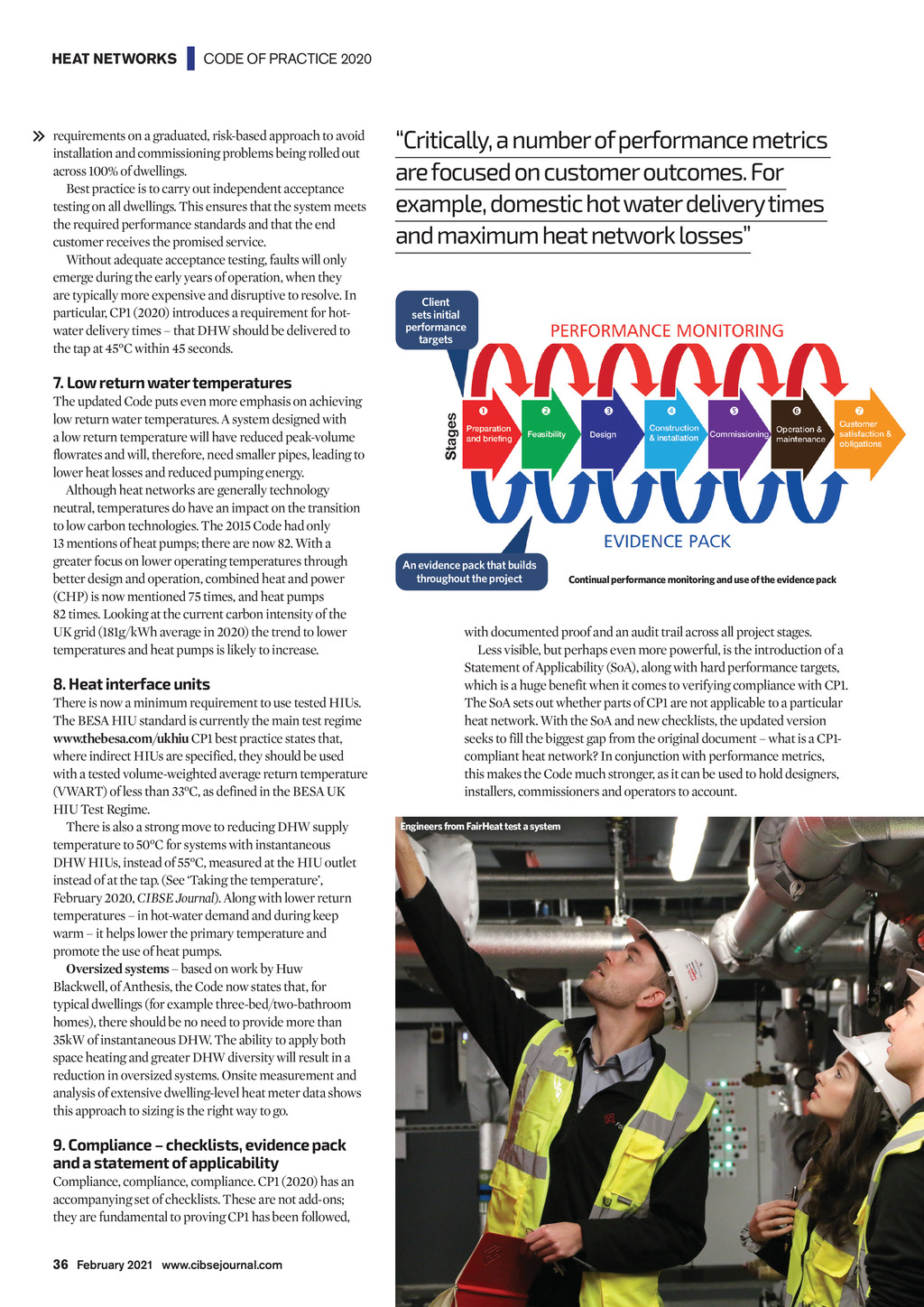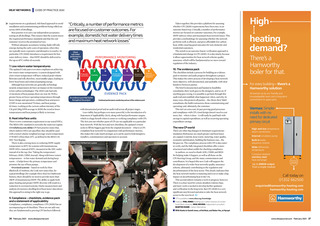




HEAT NETWORKS | CODE OF PRACTICE 2020 requirements on a graduated, risk-based approach to avoid installation and commissioning problems being rolled out across 100% of dwellings. Best practice is to carry out independent acceptance testing on all dwellings. This ensures that the system meets the required performance standards and that the end customer receives the promised service. Without adequate acceptance testing, faults will only emerge during the early years of operation, when they are typically more expensive and disruptive to resolve. In particular, CP1 (2020) introduces a requirement for hotwater delivery times that DHW should be delivered to the tap at 45C within 45 seconds. Critically, a number of performance metrics are focused on customer outcomes. For example, domestic hot water delivery times and maximum heat network losses Client sets initial performance targets 7. Low return water temperatures The updated Code puts even more emphasis on achieving low return water temperatures. A system designed with a low return temperature will have reduced peak-volume flowrates and will, therefore, need smaller pipes, leading to lower heat losses and reduced pumping energy. Although heat networks are generally technology neutral, temperatures do have an impact on the transition to low carbon technologies. The 2015 Code had only 13 mentions of heat pumps; there are now 82. With a greater focus on lower operating temperatures through better design and operation, combined heat and power (CHP) is now mentioned 75 times, and heat pumps 82 times. Looking at the current carbon intensity of the UK grid (181g/kWh average in 2020) the trend to lower temperatures and heat pumps is likely to increase. 8. Heat interface units There is now a minimum requirement to use tested HIUs. The BESA HIU standard is currently the main test regime www.thebesa.com/ukhiu CP1 best practice states that, where indirect HIUs are specified, they should be used with a tested volume-weighted average return temperature (VWART) of less than 33C, as defined in the BESA UK HIU Test Regime. There is also a strong move to reducing DHW supply temperature to 50C for systems with instantaneous DHW HIUs, instead of 55C, measured at the HIU outlet instead of at the tap. (See Taking the temperature, February 2020, CIBSE Journal). Along with lower return temperatures in hot-water demand and during keep warm it helps lower the primary temperature and promote the use of heat pumps. Oversized systems based on work by Huw Blackwell, of Anthesis, the Code now states that, for typical dwellings (for example three-bed/two-bathroom homes), there should be no need to provide more than 35kW of instantaneous DHW. The ability to apply both space heating and greater DHW diversity will result in a reduction in oversized systems. Onsite measurement and analysis of extensive dwelling-level heat meter data shows this approach to sizing is the right way to go. An evidence pack that builds throughout the project Continual performance monitoring and use of the evidence pack with documented proof and an audit trail across all project stages. Less visible, but perhaps even more powerful, is the introduction of a Statement of Applicability (SoA), along with hard performance targets, which is a huge benefit when it comes to verifying compliance with CP1. The SoA sets out whether parts of CP1 are not applicable to a particular heat network. With the SoA and new checklists, the updated version seeks to fill the biggest gap from the original document what is a CP1compliant heat network? In conjunction with performance metrics, this makes the Code much stronger, as it can be used to hold designers, installers, commissioners and operators to account. Engineers from FairHeat test a system 9. Compliance checklists, evidence pack and a statement of applicability Compliance, compliance, compliance. CP1 (2020) has an accompanying set of checklists. These are not add-ons; they are fundamental to proving CP1 has been followed, 36 February 2021 www.cibsejournal.com CIBSE Feb21 pp33-34, 36-37 CP1 Heat Newtork Code.indd 36 22/01/2021 17:52